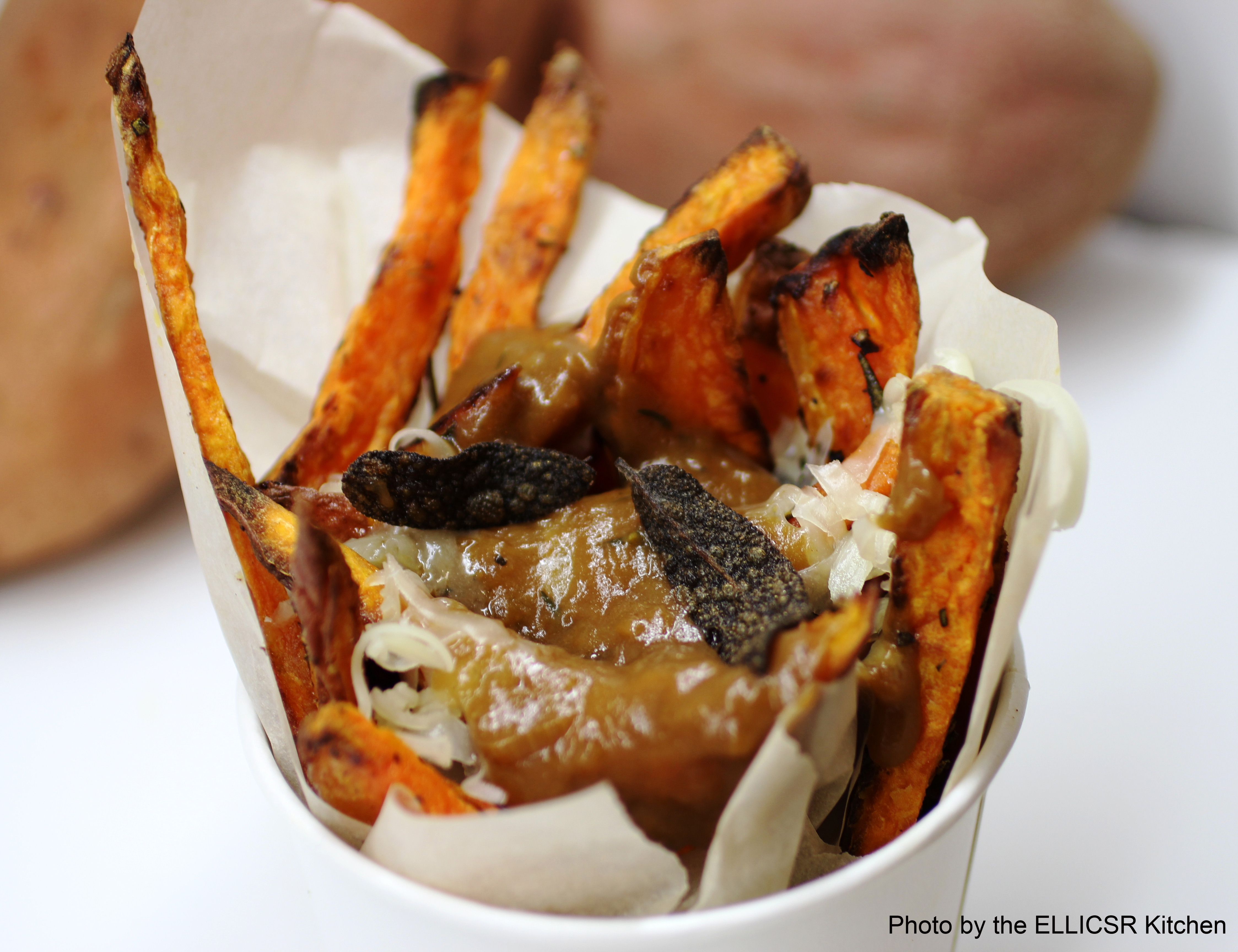“ooo-Ma-me”, almost like the sound one would make after eating a bite of something incredibly delicious. Well it’s not too far off, in Japanese the words “Umai” and “mi” literally translate to “delicious” and "taste".

Sweet potato poutine with a rich porcini
mushroom gravy... is your mouth watering
yet?
You may think of umami as just another fancy culinary buzz word, but it’s the newest, distinct member of our basic tastes (salt, sweet, bitter and sour). Discovered by Professor Kikunae Ikeda in Japan 1908, umami was used to describe that savory, satisfying, almost meaty flavour present in dashi stock (a flavourful Japanese broth). Now, scientists and chefs alike are really trying to understand the mystical properties of umami, which foods have it, and how we can use it to make tastier and healthier dishes.
Where can I find Umami?
Umami exists in foods that contain the compound glutamate (glutamic acid). This may sound familiar, as it is a key component to the controversial seasoning MSG, which is highly processed and high in sodium. However glutamate is also found naturally in whole ingredients, sauces, and fermented products. Ingredients like parmesan cheese, tomatoes, fresh mushrooms, green vegetables, sauerkraut, soy sauce and shellfish all contain glutamic acid, meaning you’ll get that savory umami taste in your dishes naturally.
So how can you use umami to take a dish from “great” to “absolutely mouthwatering”? Food scientists have figured out that when you pair foods that contain glutamic acid along with foods that contain the compounds
guanylate or
inosinate, it results in a flavour explosion or synergistic effect if you want to get technical. You will find these compounds in foods such as dried mushrooms, dried fish, anchovies, beef, pork and chicken.
Take the classic Caesar salad, for example. This savory and satisfying salad takes advantage of the umami synergistic effect. Two key ingredients in the salad dressing are parmesan cheese and anchovies, which in combination give you this incredible flavour.
The combination of parmesan cheese and anchovies in Caesar dressing takes
advantage of the umami synergistic effect
But wait there’s more! Aging, fermentation, slow cooking and caramelization further improve the umami taste. These preservation and cooking techniques do this by breaking down the glutamic acid in the ingredients to release even more glutamate, and a whole lot of flavour.
The discovery of Umami has taken the chef and foodie culture by storm, but this is also of great interest to the nutrition and wellness community. There is a lot of academic work being done to show how umami could possibly play a role in reducing our dietary fat and sodium intake. Using certain ingredients to get big flavour, especially when in combination with one another, could mean that we can use a lighter hand with that salt shaker or try leaner cuts of meat. Some think we may even crave processed foods less often if we can satisfy that taste naturally with our own home cooking.
We’ve used the power of Umami in the ELLICSR kitchen for some delicious recipes like our
Sweet Potato Poutine with Porcini Gravy and our
Vegetarian Smoky Mole Chile. There are a lot of exciting possibilities in the world of umami, so I say start experimenting and get cooking.
Tell us what you have cooked up with Umami!
And for any other culinary questions please feel free to
email me or tweet me
@ELLICSRKitchen. Also don’t forget to check out our website full of delicious recipes, videos and nutrition tips at the
ELLICSR Kitchen.
